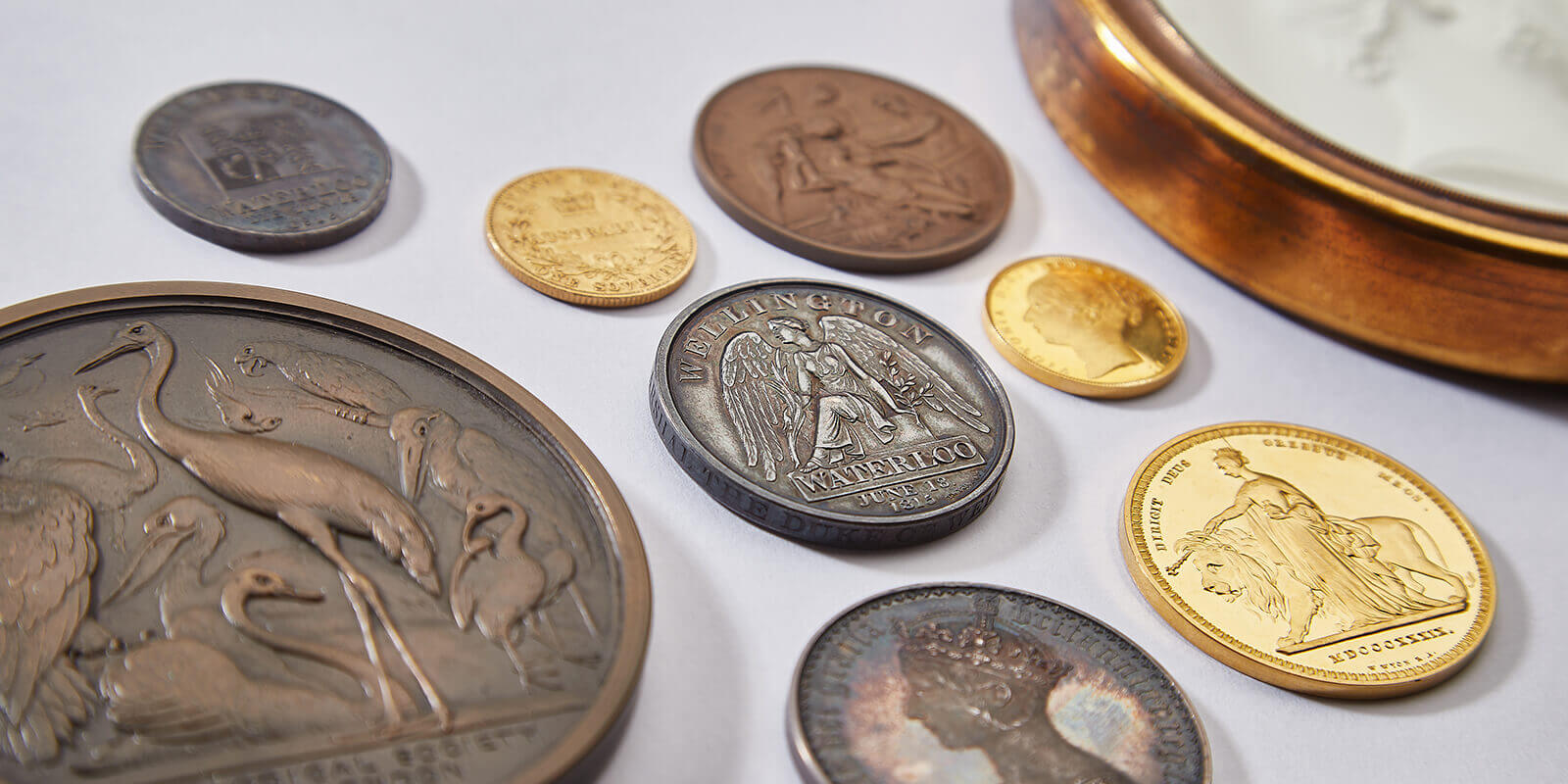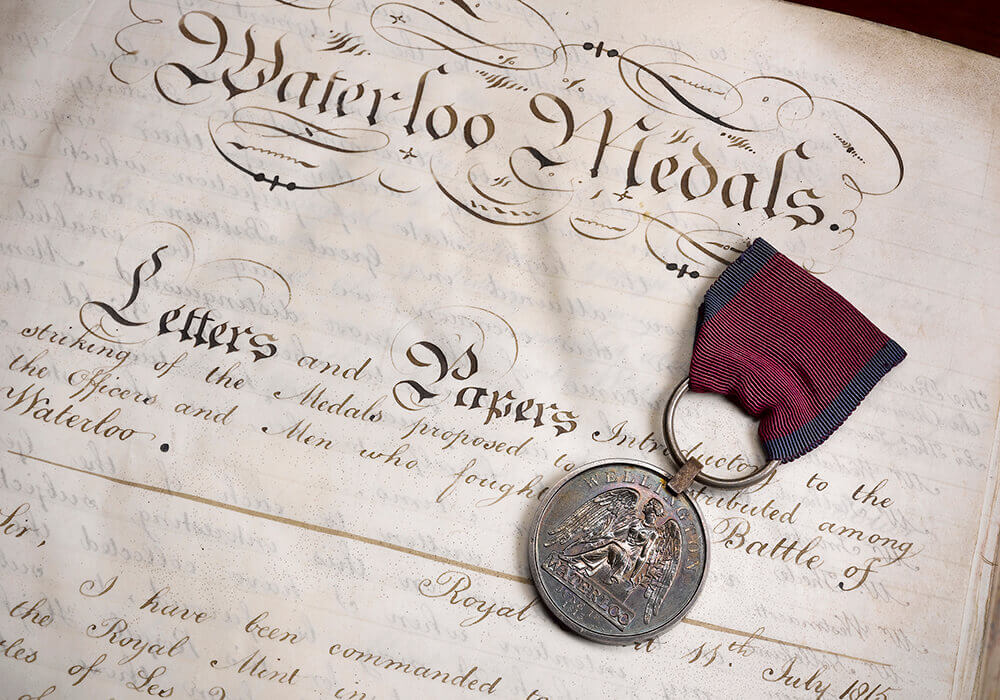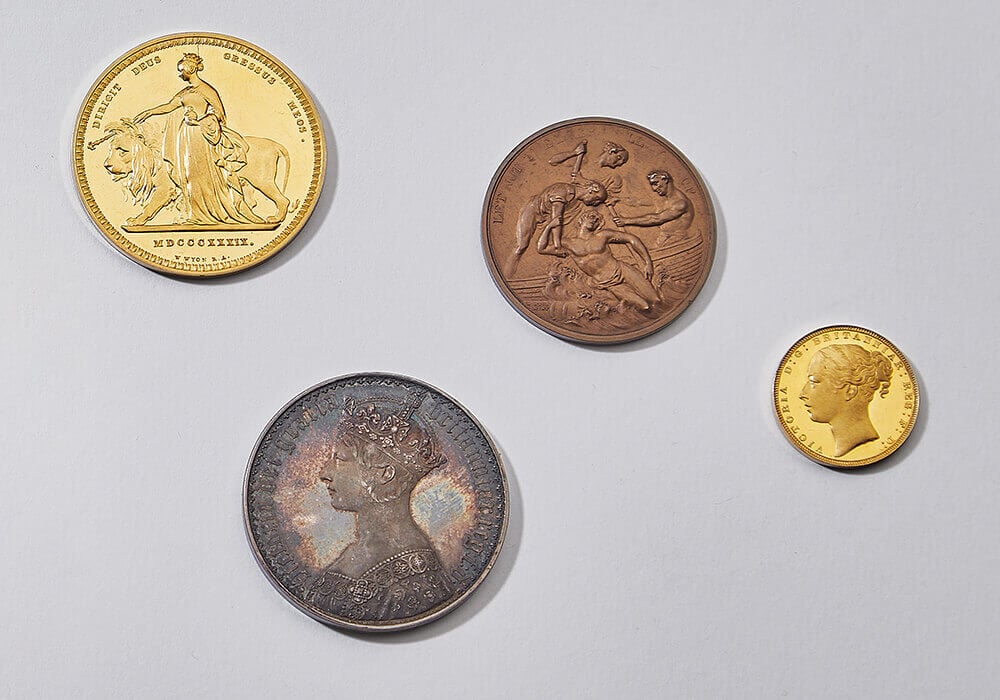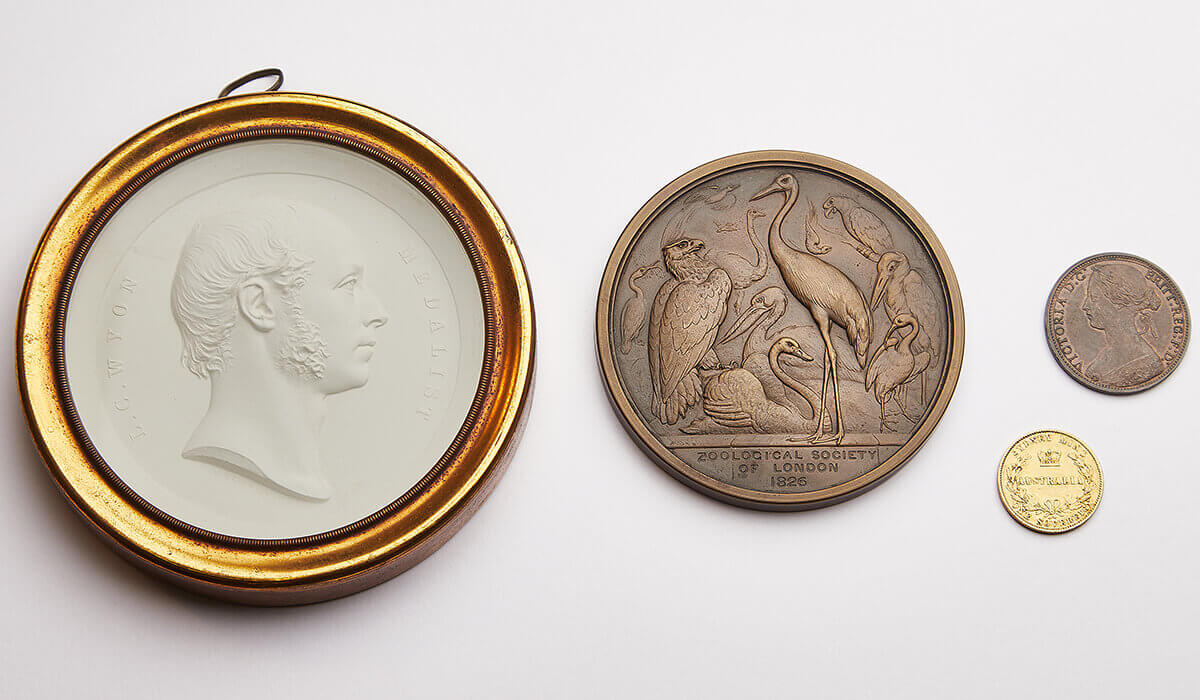The Wyons: A Dynasty of Engravers
For much of the 19th century the Royal Mint was a relatively small organisation, little more than 100 strong. Family influence was much in evidence, and nowhere more so than in an Engraving Department dominated by the Wyons. No fewer than six of the Wyon family were employed at different times throughout the century, while outside the Royal Mint other Wyons were to be found in privately-run mints in Birmingham or as medallists and seal engravers in London.

First Involvement with the Royal Mint
The Wyon family, originally from Germany, had become established in Birmingham during the late eighteenth century. It was not until 1811 that the first of them came to the Royal Mint, when Thomas Wyon junior, ‘a young Artist of promising abilities’, was appointed to the Engraving Department of the Royal Mint, in the hopes that he might revitalise the Department’s work. In 1815, still in his early 20s, Thomas succeeded to the post of Chief Engraver, and confirmed his early promise by producing a series of celebrated coins and medals, including the silver medal awarded to the victorious troops at Waterloo.

He was assisted for a time by his father, Thomas, but it was his younger cousin, William, who joined him on a more permanent basis. William Wyon was appointed Second Engraver in 1816, despite the convictions of the Master of the Royal Mint, William Wellesley Pole, that the two senior engraving posts should not be occupied by the same family. Though Pole discouraged him from taking part in the competition to fill the post, William competed anonymously with an entry so skilful his appointment could not be refused. Sadly, the two Wyons were not destined to work together for very long, for Thomas Wyon died in September 1817, leaving vacant the post of Chief Engraver.
William Wyon – Chief Engraver
Thomas Wyon’s death brought a need for a new Chief Engraver, the duties of the post being performed in the interim by the temperamental Italian, Benedetto Pistrucci, whose skill Pole valued far above that of William Wyon. Modest and self-effacing, Wyon laboured without appreciation while Pole remained Master. But after Pole’s resignation in 1823, Pistrucci found himself with few friends and supporters at the Royal Mint. Wyon’s talent was officially recognised in 1828, when he was at last promoted to Chief Engraver.

The most famous of the Wyon family, William produced many beautiful and well-known designs, most notably his Young Head of Victoria. ‘You always represent me favourably’, the Queen told him, and the youthful portrait remained on her coinage until she was a grandmother in her 60s. It was also one of Wyon’s medal portraits of Victoria which served as the model for the first postage stamps. Yet he worked against the background of a long-running and often embarrassingly public rivalry with the embittered Pistrucci, who maintained that he should be Chief Engraver. Though Pole, in his tenure as Master of the Mint, had promised the post to Pistrucci, the Italian-born artist was barred from becoming Chief Engraver.
A Family Legacy
William’s son, Leonard, had been trained virtually from birth to succeed his father and was duly appointed Second Engraver in 1844, the position that William had once held. But when William died in 1851 the post of Chief Engraver was abolished, and Leonard had to instead be content as a non-resident Modeller and Engraver to the Royal Mint. William’s cousin, James, who had acted as his assistant, took the lesser appointment of Resident Engraver (1851–1861), briefly to be succeeded by his son, George (1861–1862).
Leonard Wyon
Leonard found support from Sir Charles Freemantle, who described him as the best engraver available and ‘a man of taste and cultivation’, but he did not inherit the full talent of his father. A conscientious worker, Leonard was anxious to ‘elevate the Art of the Coinage’ to the best of his ability, producing a number of notable coins and medals during his tenure. Among them was the bun-head penny of 1860, the design of which was personally supervised by the Queen and the Prince Consort.

Leonard Wyon’s death in 1891 brought to an end the Wyon family’s direct association with the Royal Mint. Their memory, however, survives in numismatic history, and the name Wyon is sure to be mentioned whenever British coin designs are discussed.
